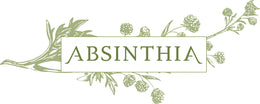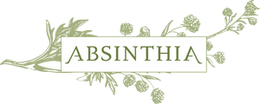The Rise and Fall of Absinthe: A Propaganda Poster Story

When most people think of Absinthe, they probably imagine a banned hallucinogenic drink or artwork depicting it as a muse. This is thanks to a massive propaganda campaign against Absinthe that began in the late 1800s. Explore the history and myths of this campaign and how it ultimately led to the prohibition of Absinthe through the propaganda posters that helped spread the misinformation about the Green Fairy.
Absinthe's Complex History (or Absinthe's Bad Reputation)
It's a fact that Absinthe was given a bad reputation, but it started off as a golden spirit sought after by all kinds of people and made its way into being associated with the French Bohemian culture.
Absinthe was first created in Switzerland in the early 1800s. It quickly became popular in France, known as "La Fee Verte" (the Green Fairy). It was trendy among artists and intellectuals, who believed that Absinthe enhanced their creativity.
Absinthe is traditionally made with the trinity of herbs, wormwood, anise, and fennel. The herb wormwood contains a compound called thujone. Like most things, thujone can be fatal if ingested undistilled in large quantities. At the time, people thought the thujone was responsible for Absinthe's supposed hallucinogenic effects.
Actually, the amount of thujone is so small once distilled that someone drinking Absinthe to hallucinate would die of alcohol poisoning long before thujone could produce visions of green fairies. Considering that many versions of Absinthe at that time were between 90 to 150 proof, it makes sense that excessive drinking and alcohol poisoning may have caused many of the negative side effects associated with Absinthe.
In the 1840s, French soldiers were given Absinthe as a preventative for malaria and dysentery. When they returned home to France, they requested Absinthe at cafes, and Absinthe became the drink of choice.
Soon, Absinthe became a popular elixir/digestif that caught the attention of artists, writers, and the bohemians of Paris. It was so popular that the early evening hour was called l'heure verte, the "green hour," because cafe patrons would order Absinthe.
During this period, the French wine industry experienced phylloxera that nearly wiped out their crops. Wine became more expensive, so elixirs like Absinthe became more popular because it was affordable.
When the French wine industry recovered, they encountered a lack of customers because Absinthe had become the drink of choice. Along with brewing prohibitionists, the wine industry began a misinformation campaign to get people back to drinking wine. A series of scandals involving its supposed effects also increased people's stance that Absinthe was a wicked spirit.
The Anti-Absinthe Movement
By 1900, Absinthe became the spirit to control and dissuade consumers from imbibing. Led by a massive propaganda campaign, claims that Absinthe caused madness was easy for consumers to believe. It was a murder case that ultimately led to Absinthe's downfall and its fatal prohibition outcome.
In 1905, a Swiss farmer named Jean Lanfray was convicted of murdering his family in a drunken rage. Lanfray had spent the day consuming a wide range of liquors, from wine to brandy and a small amount of Absinthe. Ultimately, the Green Fairy took the whole blame for his drunken tragedy. Shortly after, Belgium and Brazil banned Absinthe in 1906. Then Switzerland in 1908. And the Netherlands in 1909, with the United States following suit in 1912, and finally, France in 1914.
Public opinion that Absinthe could induce madness was built from the anti-absinthe movement. The anti-absinthe movement was led by a group of doctors, temperance activists, and the wine industry. They argued that Absinthe was more dangerous than other alcoholic beverages because of its supposed hallucinogenic effects. They also claimed that Absinthe was addictive and caused people to become violent.
To support their claims, the anti-absinthe activists spread a number of myths about the drink. They claimed that Absinthe made people go mad, caused them to see ghosts, and made them hallucinate. They also said that Absinthe was more addictive than other alcoholic beverages. Beer and wine were healthy, they said, spirits were bad, and absinthe was the devil.
Absinthe and culture were solidified in previous years because of the popularity of posters. See my blog post to learn more about the importance of poster art during the Belle Epoque. Whereas posters promoted absinthe at first, as the anti-absinthe movement began,posters were used to visually link Absinthe with self-destruction, often featuring the grim reaper or death to persuade the public that Absinthe was to be feared.
Present Day Absinthe
It wasn't until 2007 that the United States lifted the ban on Absinthe. Since then many resources have debunked the myth that Absinthe has hallucinogenic properties.
Depending on the Absinthe recipe, one can find bottles of Absinthe that are similar to what Toulouse-Lautrec or Oscar Wilde drank. Modern day Absinthe is completely safe to enjoy and is no different than vintage absinthes. My Absinthe is based on the Swiss Recipe. I've refined it over time to highlight unique qualities that produce a sophisticated flavor. My Absinthe has an herbal personality. With my new Barrel Aged Absinthe, one can enjoy the weighty character of the herbs soaked in Oak Barrels for 6 months. Grab a bottle today {inert link}!
Anti-Absinthe Posters




French film advertisement from a 1911 anti-absinthe French film






Leave a comment